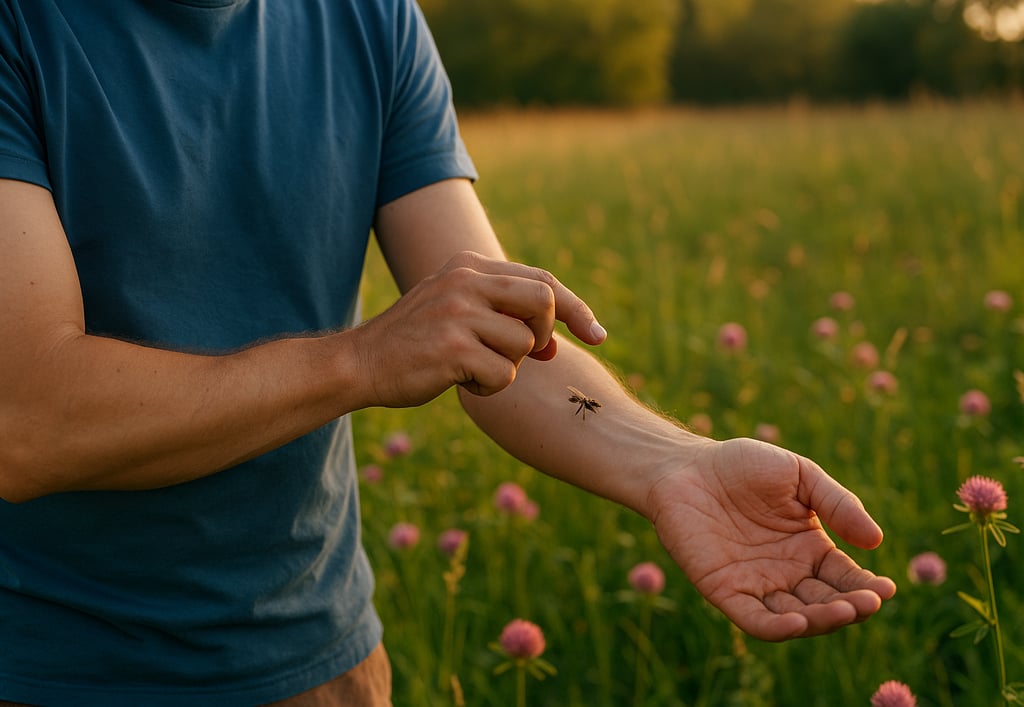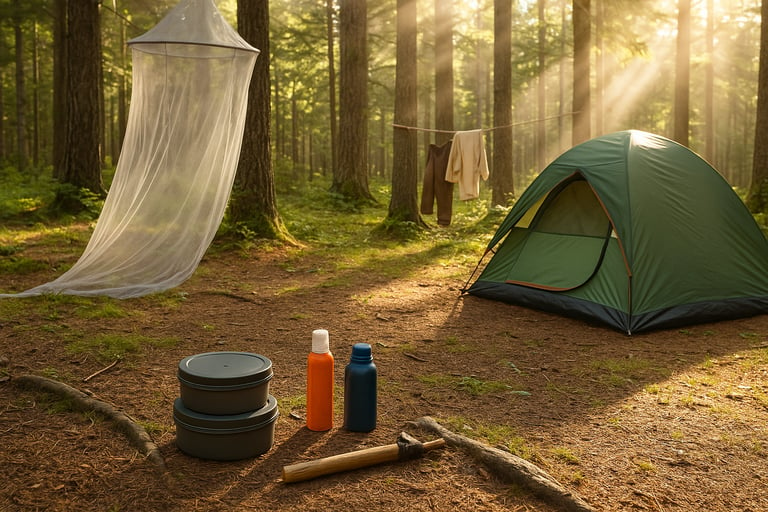Insect Hazards in the Wild: How to Avoid Bites, Stings, and Disease
Avoid insect bites, stings, and diseases in the wild with this guide on repellent use, tick prevention, and post-bite care for safe and comfortable hiking or camping trips.


Insect Hazards in the Wild: How to Avoid Bites, Stings, and Disease
Staying safe outdoors isn’t just about wild animals or weather. Insects can also pose serious risks, from painful bites and stings to diseases like Lyme or West Nile. Knowing how to recognize insect threats and take simple protective steps can help you stay comfortable and safe on any outdoor adventure.
Understanding Common Insect Threats in the Wilderness
Depending on where and when you’re exploring, you may encounter mosquitoes, ticks, ants, wasps, or even biting flies. Some are just annoying, but others can be dangerous. Mosquitoes can carry West Nile virus, Zika, and other diseases, especially near still water. Ticks are well-known for spreading Lyme disease and are common in wooded and grassy areas. Even ants and bees can cause issues if you’re allergic or accidentally disturb a nest.
Staying vigilant about insects also goes hand-in-hand with practicing general wildlife awareness — helping you detect risks before they become problems.
How to Prevent Insect Bites and Stings
The best way to stay bite-free is through a combination of clothing, camp choices, and repellents. Use insect repellent that contains DEET, picaridin, or oil of lemon eucalyptus (Stocking the right insect repellent in your survival kit is a small move that pays off in comfort and safety). Wear long sleeves and pants, and tuck your pants into your socks if you’re moving through tall grass or underbrush. Choose light-colored clothing so ticks are easier to spot.
When setting up camp, avoid pitching your tent near stagnant water, tall weeds, or thick brush. Use a bug net or enclosed shelter when sleeping, and shake out your gear and clothes before use. These small habits can dramatically cut down your exposure.
Identifying High-Risk Conditions for Bites and Stings
Insects are more active during warmer months, particularly at dawn and dusk. Mosquitoes love humid conditions and are attracted to standing water and body heat. Ticks hide in shaded, leafy ground cover and latch onto people and pets who brush against vegetation.
Bees and wasps often show up around food, sugary drinks, or trash. They can become aggressive if startled, so stay calm around them and keep your campsite clean to avoid attracting them.
Treating Insect Bites and Knowing When to Get Help
Even with precautions, bites and stings happen. Clean the area with soap and water and apply antiseptic. For swelling or itching, try a cold compress or hydrocortisone cream. If you find a tick, remove it slowly with tweezers by gripping as close to the head as possible. Don’t twist or burn it.
After a tick bite, watch for symptoms like rash, fever, or joint pain — these may indicate Lyme disease or another infection. Seek medical help if you notice these signs. Also, any difficulty breathing or rapid swelling after a sting may signal a serious allergic reaction and requires emergency care. Knowing how to treat bites and stings as part of your general wilderness first aid will help you respond quickly and correctly in the moment.
Staying Insect-Safe on Your Next Adventure
Avoiding insect hazards is all about preparation and awareness. By using repellents, wearing the right clothing, and staying alert to high-risk environments, you can enjoy nature without unwanted bites or health concerns. These basic strategies go a long way in making your hiking or camping trip safer and more comfortable.


© 2025. All rights reserved About | Privacy Policy | Terms and Conditions | Affiliate Disclosure | Disclaimer


